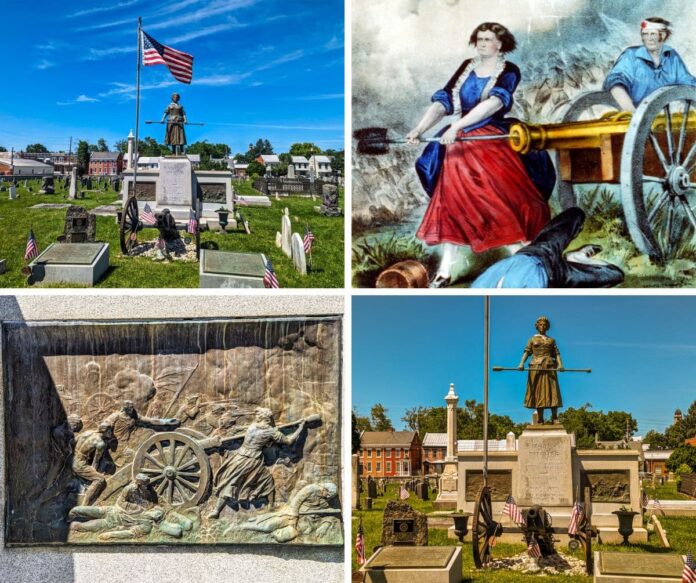
If you’re looking for information about visiting the Molly Pitcher monument and gravesite in Carlisle, you’re in the right place!
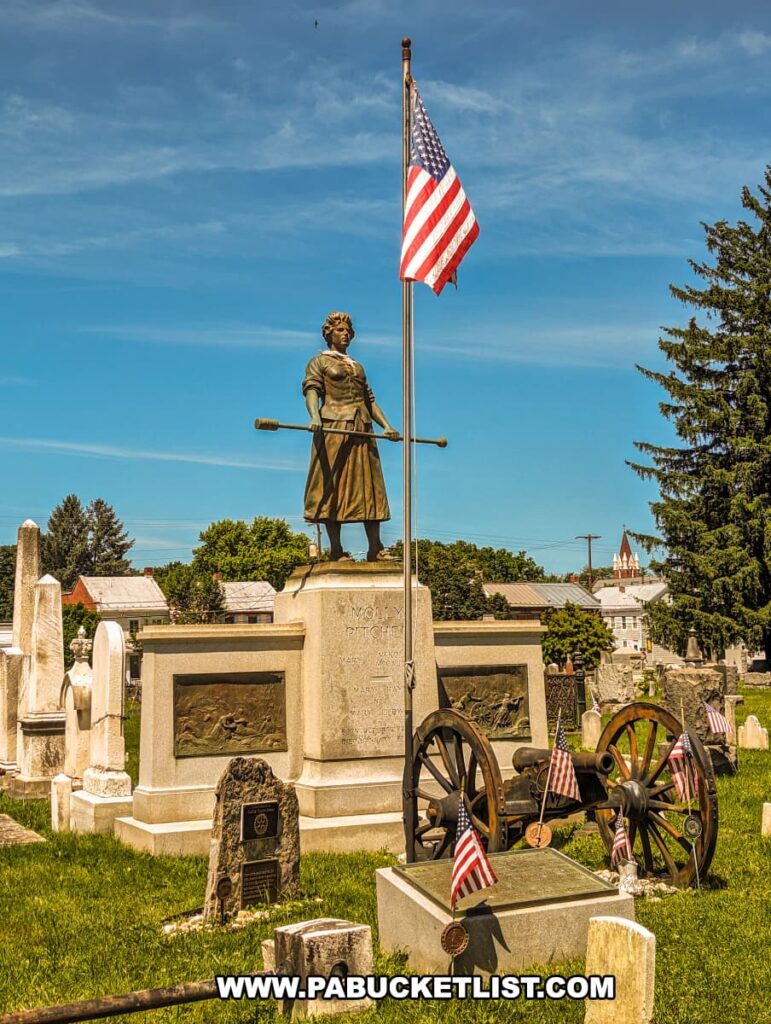
The Molly Pitcher monument and gravesite offers a poignant glimpse into the life of one of America’s most-celebrated Revolutionary War heroines.
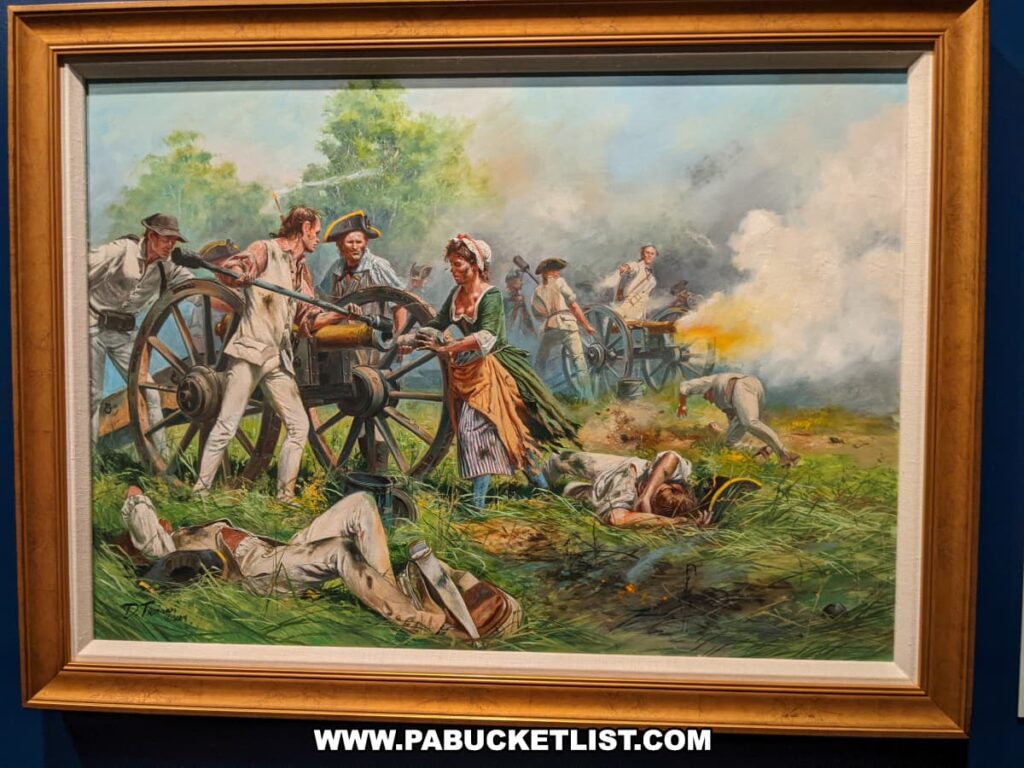
Directions | Hours | Parking
The Molly Pitcher monument and gravesite are located in Carlisle’s Old Public Graveyard, between South Hanover and South Bedford streets.
The cemetery is open from sunrise to sunset.
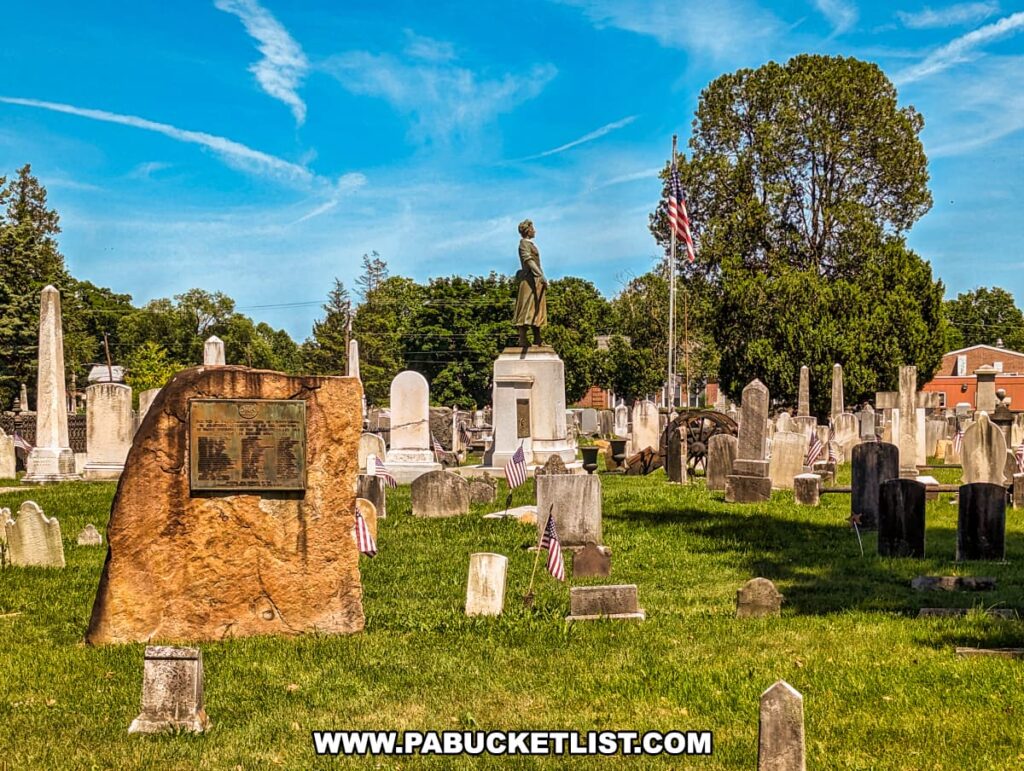
While the cemetery has no parking lot of its own, I had no problem finding free parking one block away along South Hanover Street, near the Molly Pitcher historical marker (see map above).
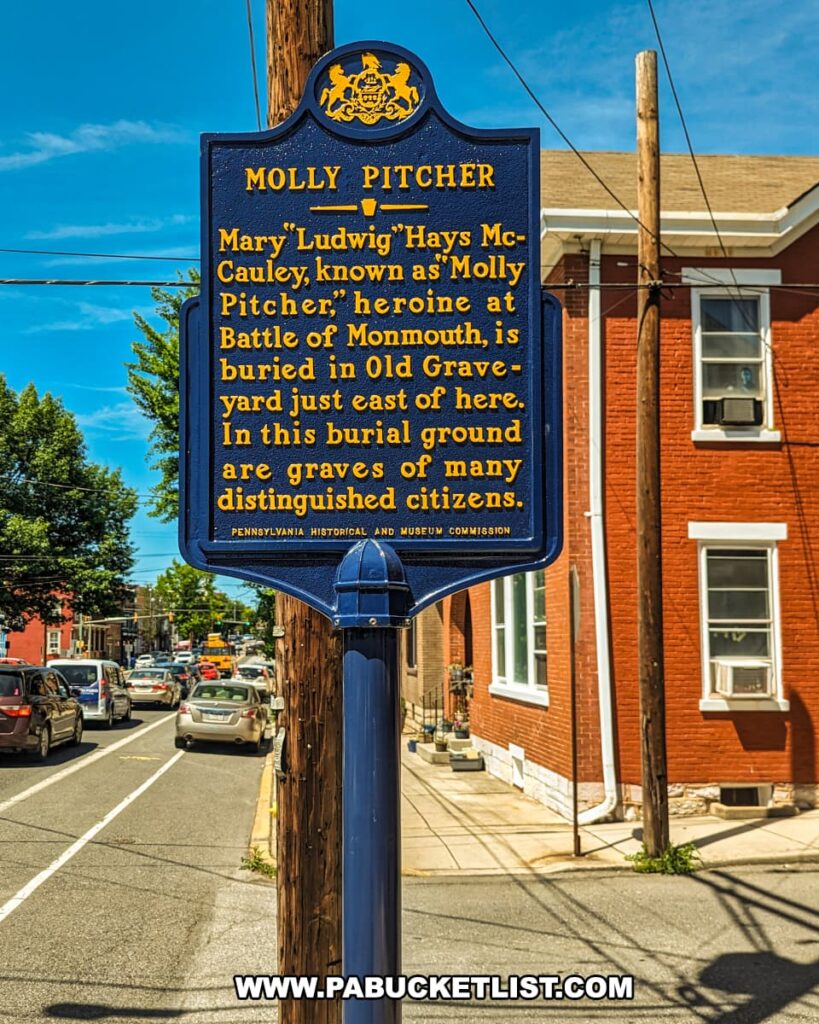
Who Was Molly Pitcher?
Born in 1744 in New Jersey, Mary Ludwig Hays, better known as Molly Pitcher, rose from humble beginnings to become a symbol of courage and resilience.
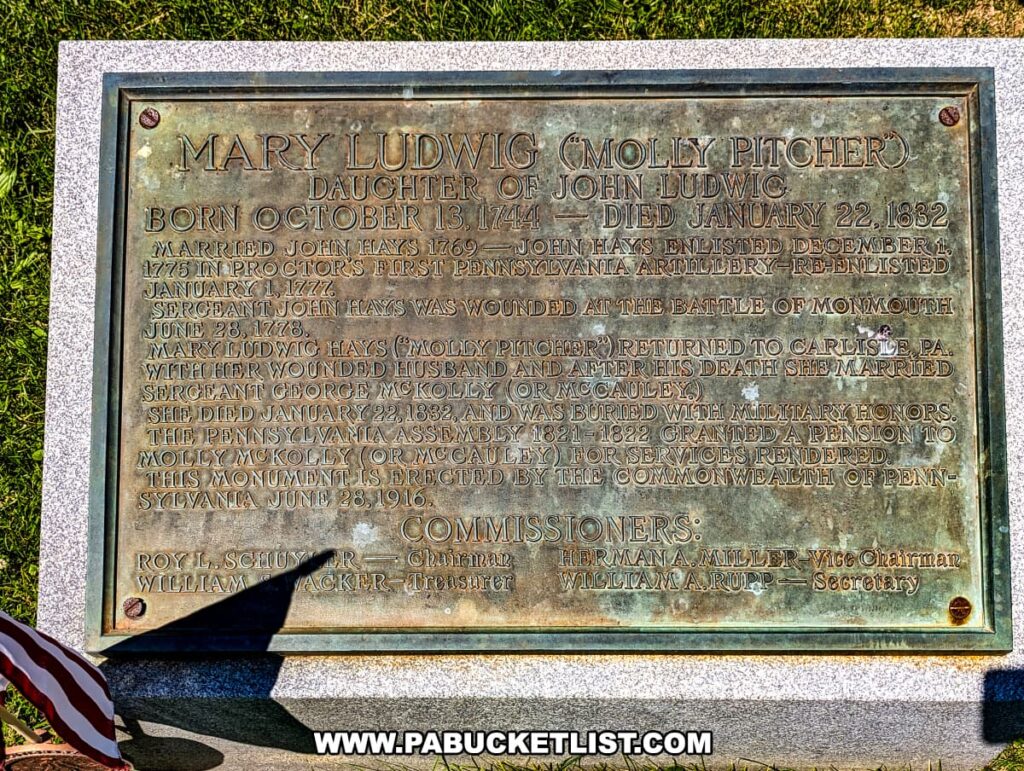
Sent to Carlisle as a young girl to work in the household of Colonel William Irvine, Mary later married William Hays, a local barber.
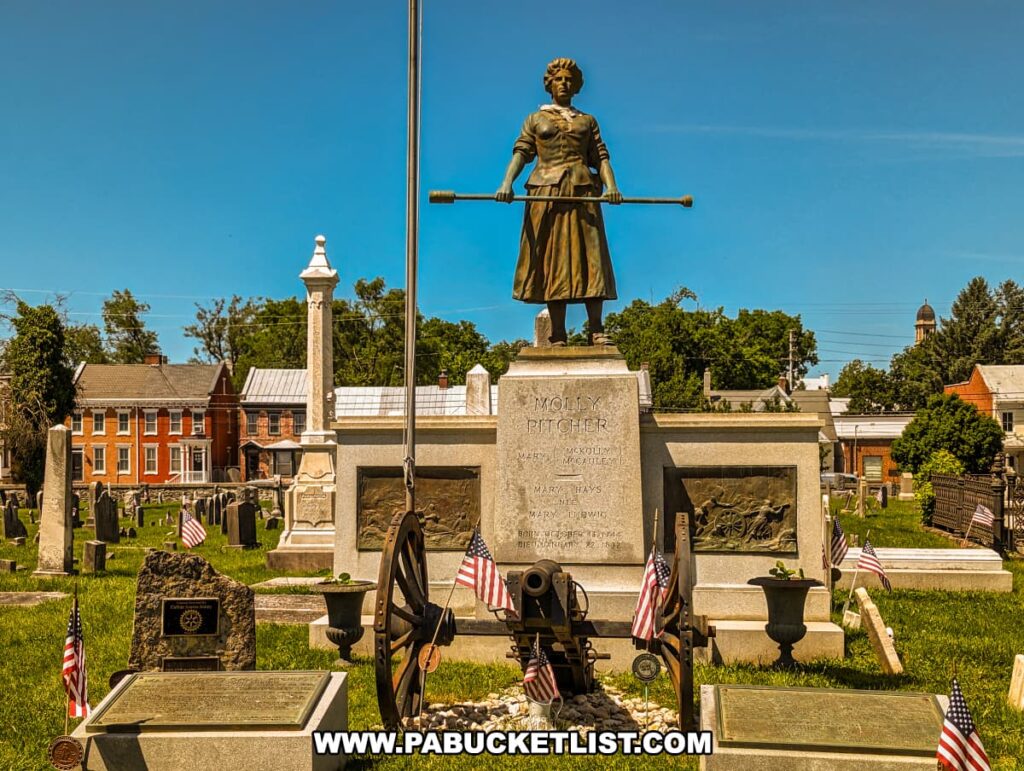
Her life took a dramatic turn when William enlisted in Captain Thomas Proctor’s 4th Pennsylvania Artillery, a unit that eventually became part of the 4th Continental Artillery.
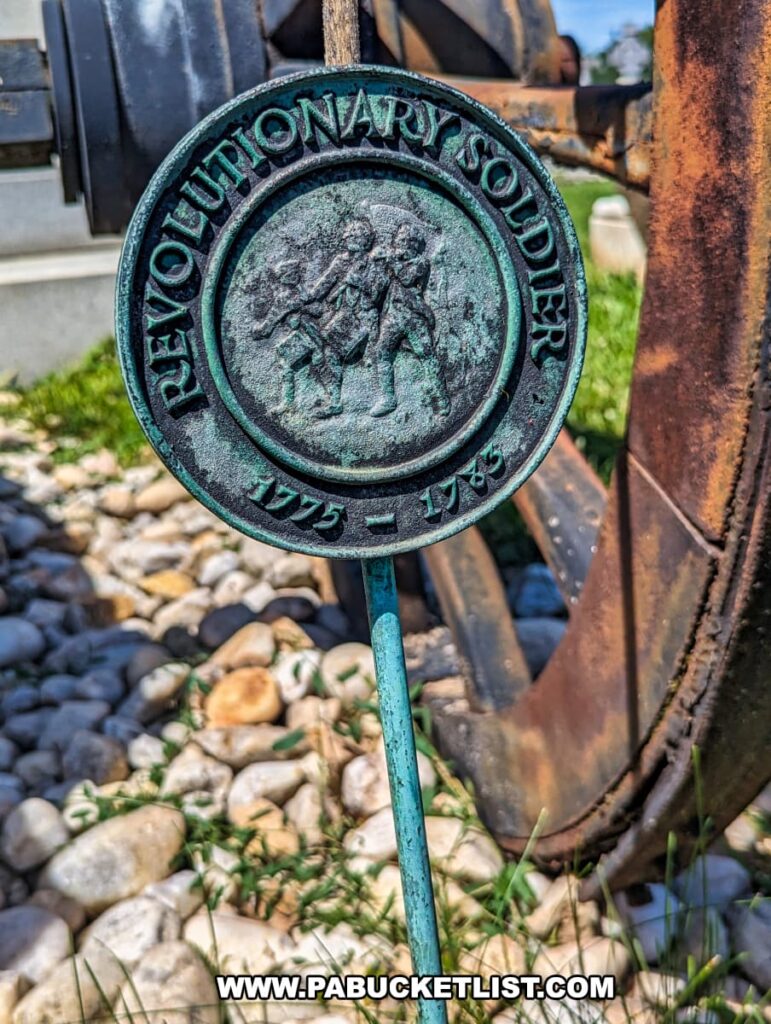
During the harsh winter at Valley Forge in 1777-1778, Mary joined her husband at the military camp, performing vital support roles such as cooking, washing, and nursing.
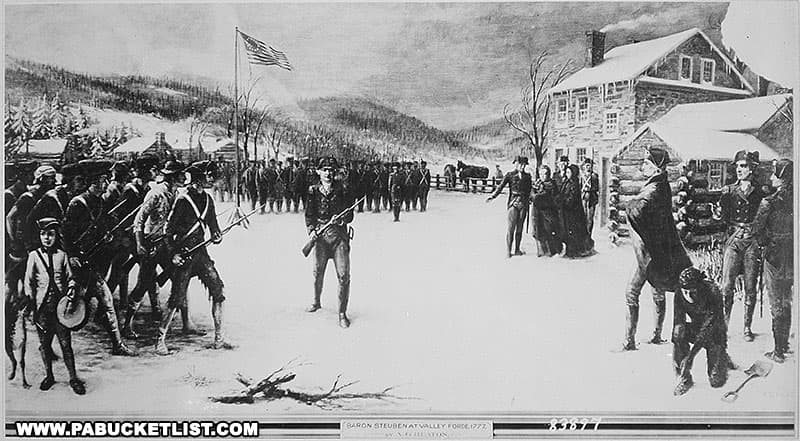
Her most famous moment came on June 28, 1778, at the Battle of Monmouth in New Jersey.
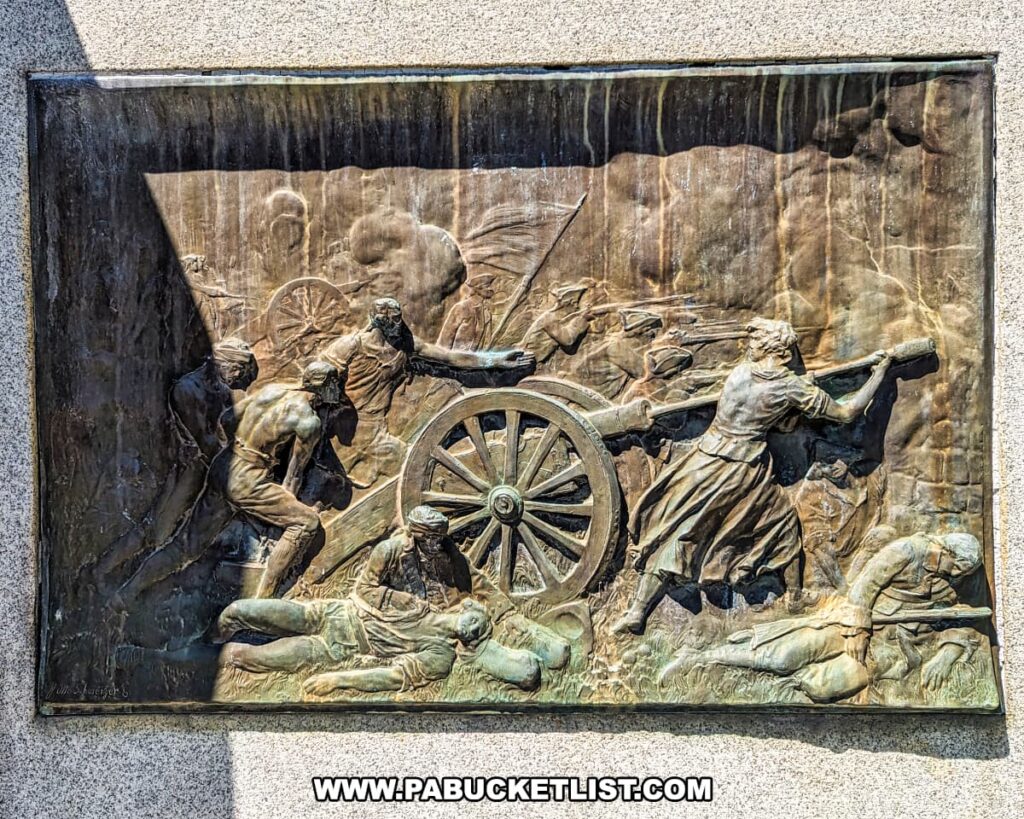
On that sweltering day, Mary earned her legendary nickname by tirelessly carrying water to soldiers and artillery pieces.
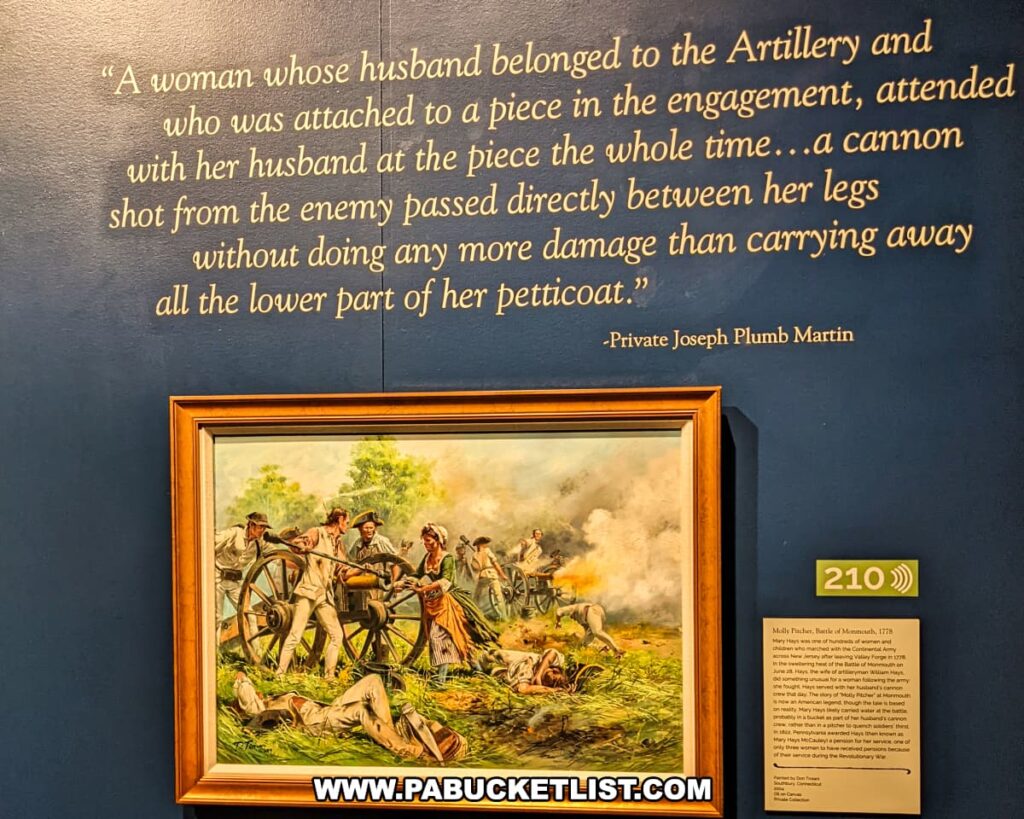
When her husband collapsed from heatstroke, she fearlessly took his place at the cannon, a heroic act that was later recognized by General George Washington, who awarded her a non-commissioned officer’s rank.
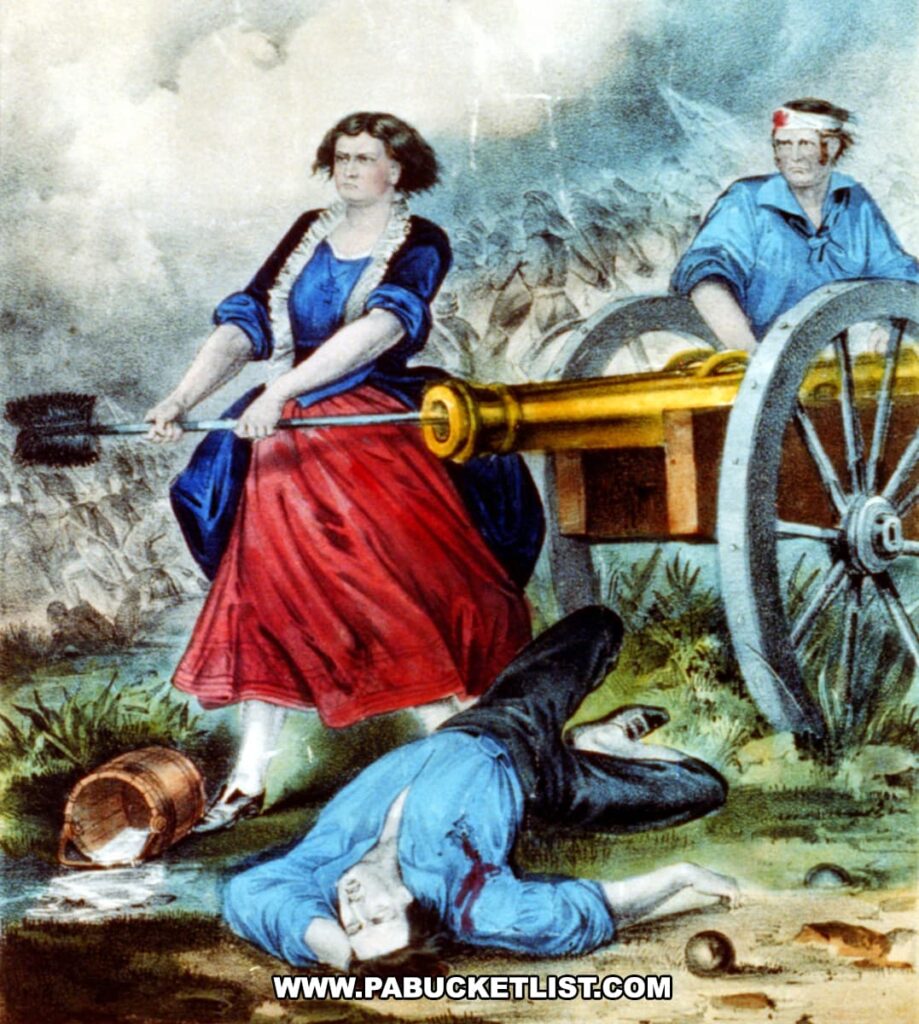
Following the war, Mary and William returned to Carlisle, where they built a life together until William’s death in 1789.
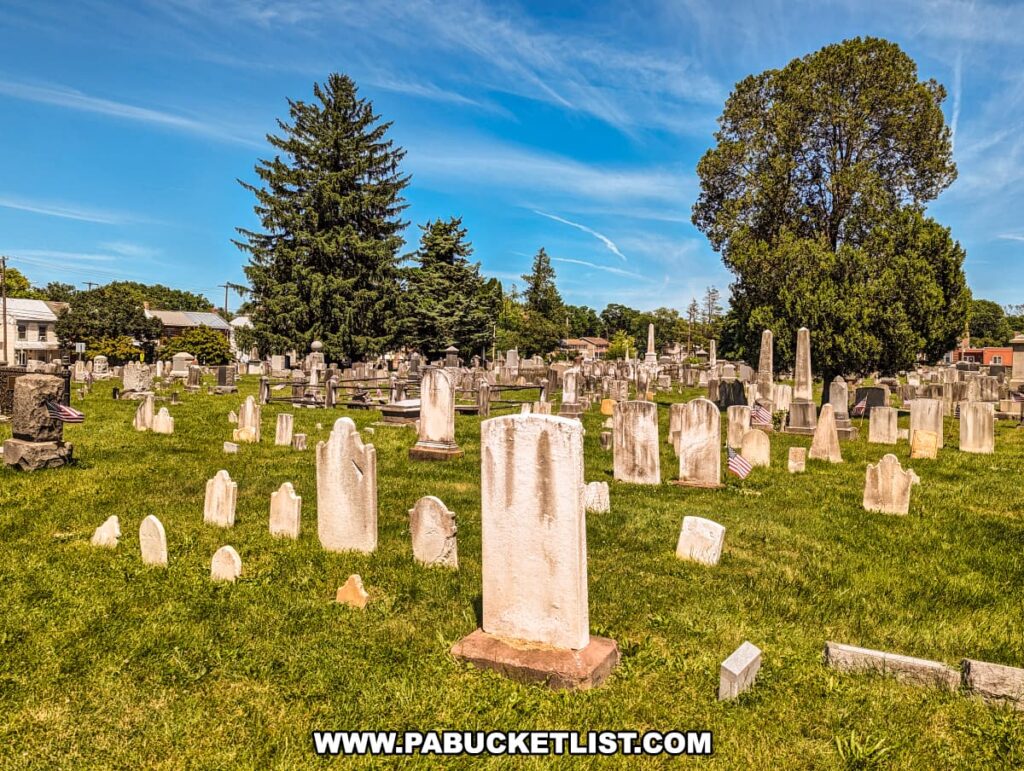
Mary then married George McCauley, another Revolutionary War veteran.
Despite the hardships she faced, including financial struggles and the disappearance of her second husband, Mary remained a beloved figure in the community.
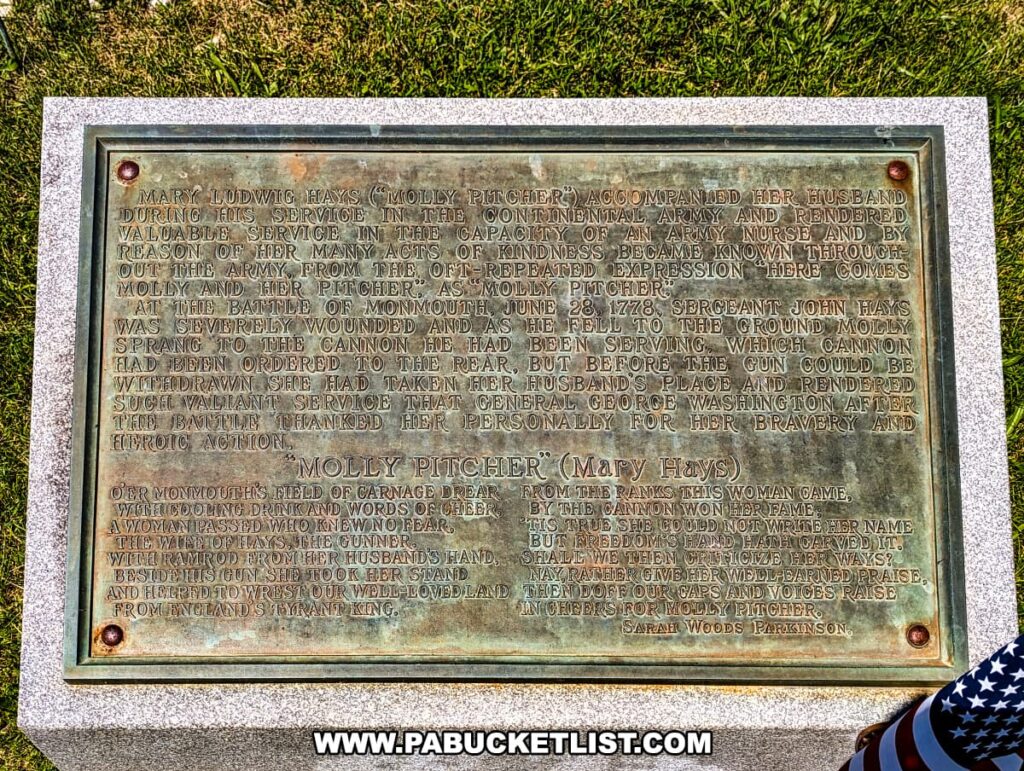
In 1822, in recognition of her wartime service, the Pennsylvania legislature granted her an annual pension of $40.
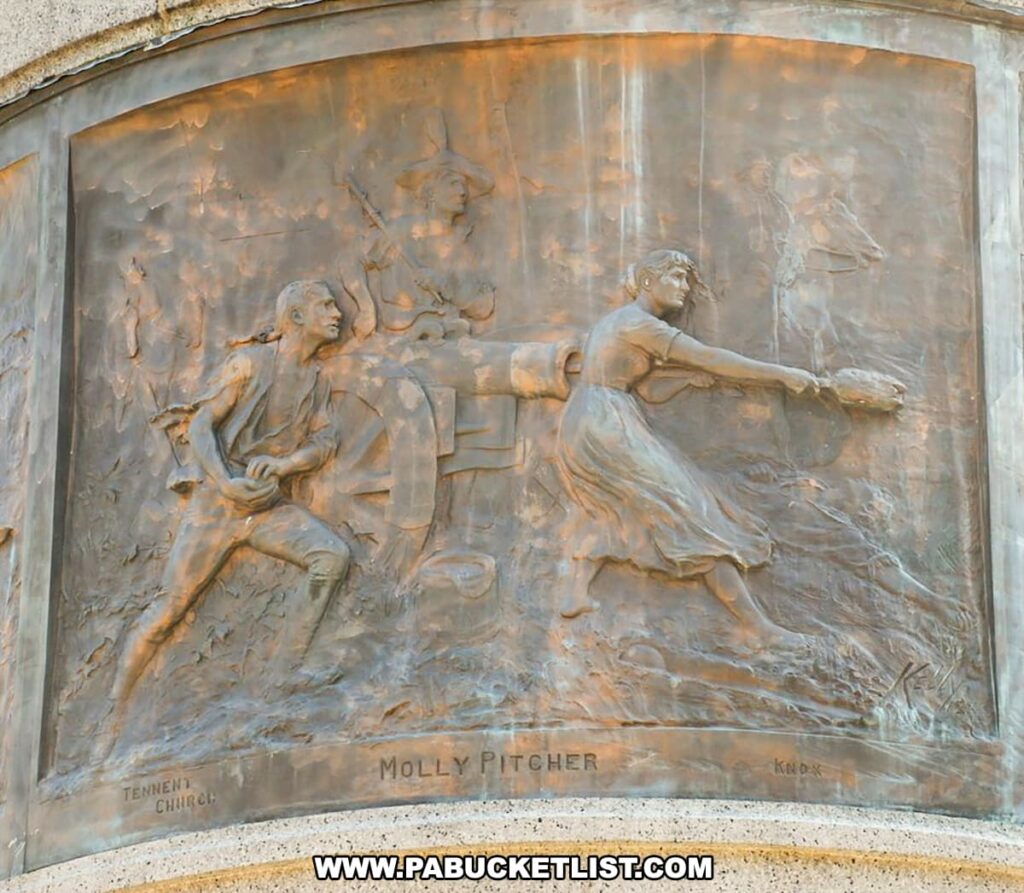
Mary Ludwig Hays McCauley passed away in 1832 at the age of 78, leaving behind a legacy of bravery and dedication.
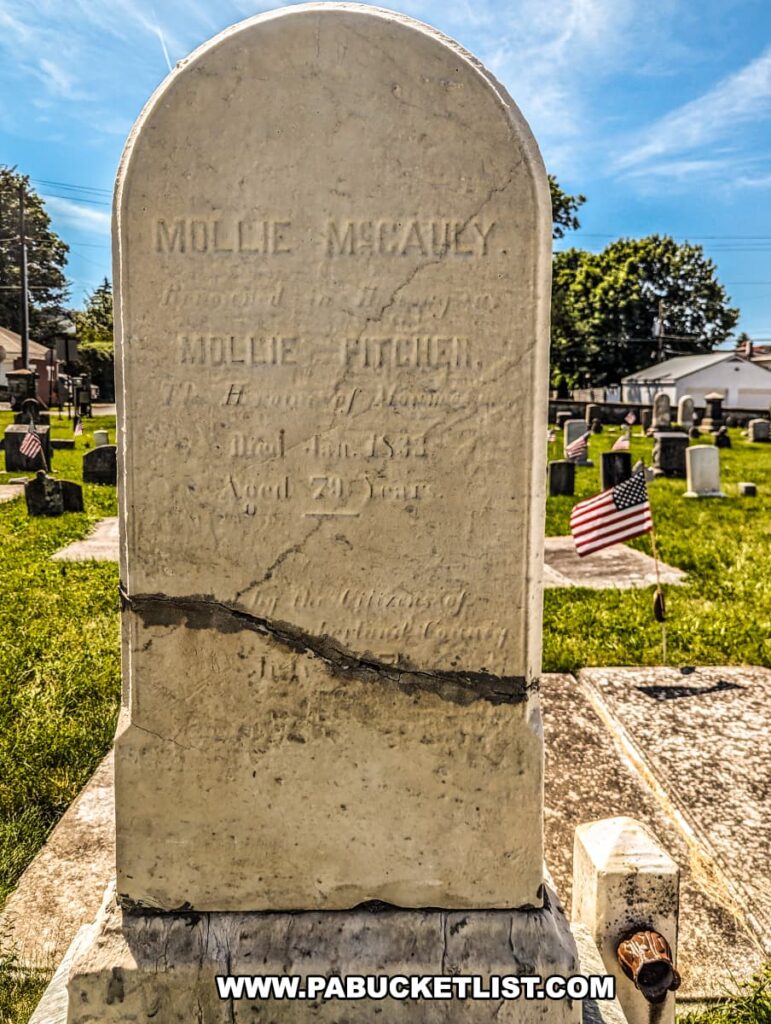
The monument erected in her honor is a fitting tribute to a woman who, in the heat of battle, displayed remarkable valor and fortitude.

Additionally, the Old Public Graveyard in Carlisle is the final resting place of nearly 100 Revolutionary War veterans, including Brigadier General William Thompson.
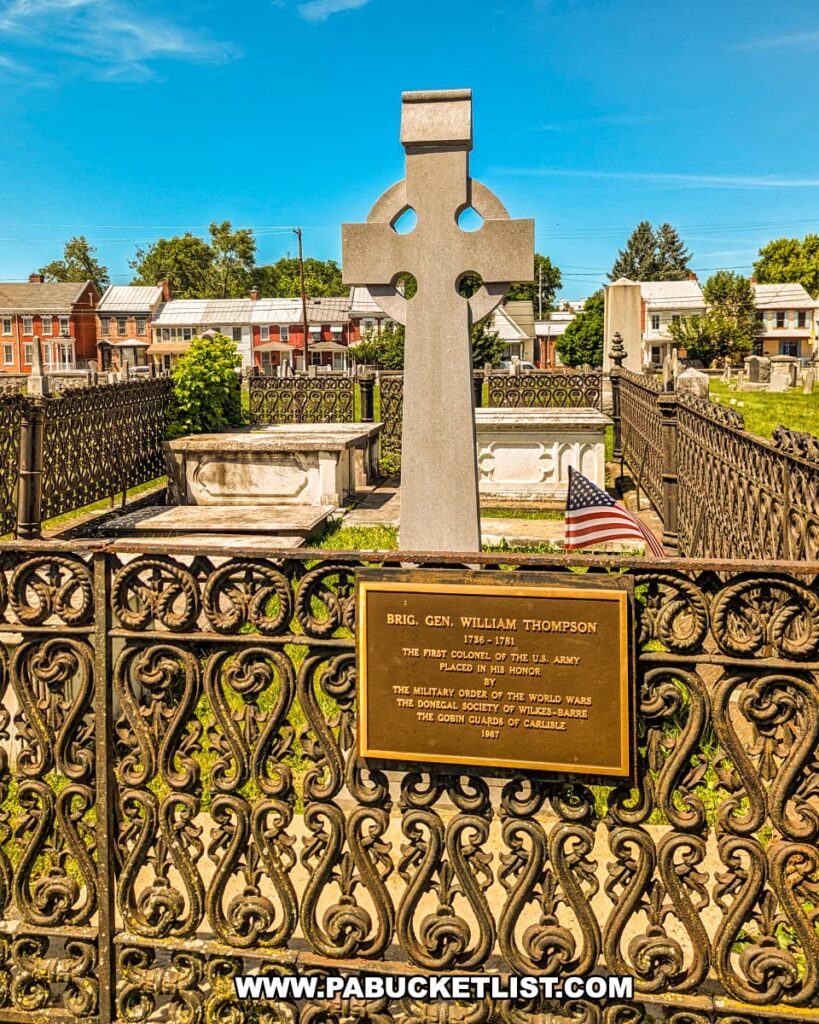
This rich historical context enhances the sense of reverence and gratitude one feels while exploring this hallowed ground.
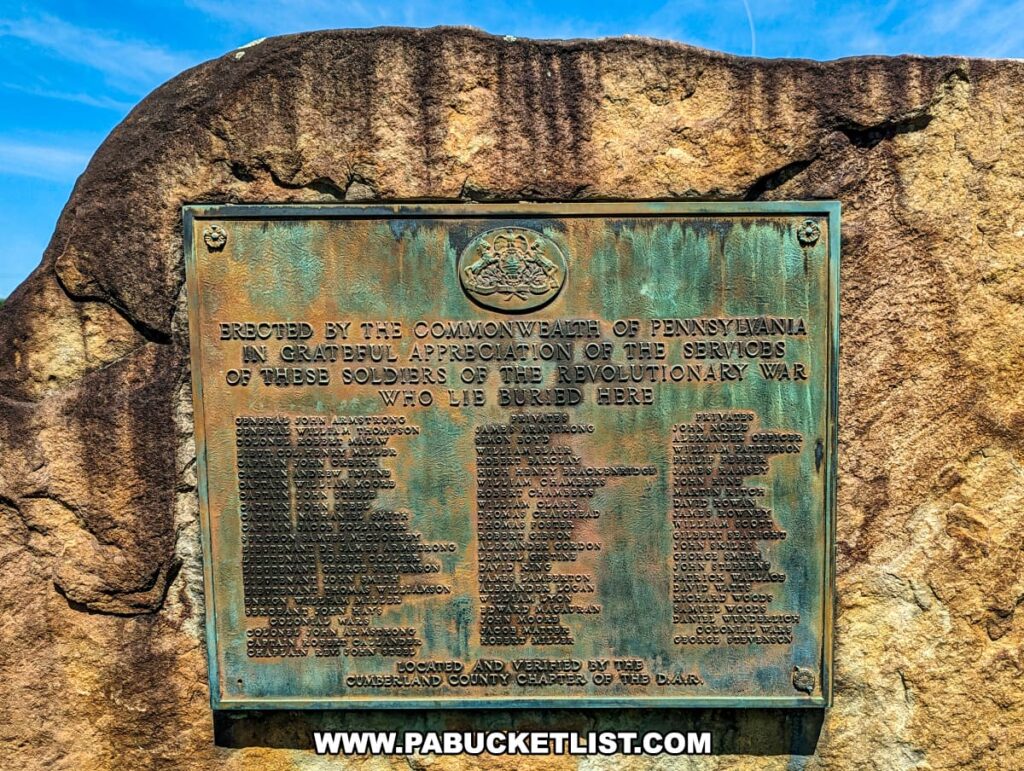
Final Thoughts
A visit to the Molly Pitcher monument and gravesite in Carlisle is a journey into the heart of American history, providing valuable insights into the life and legacy of a remarkable woman.
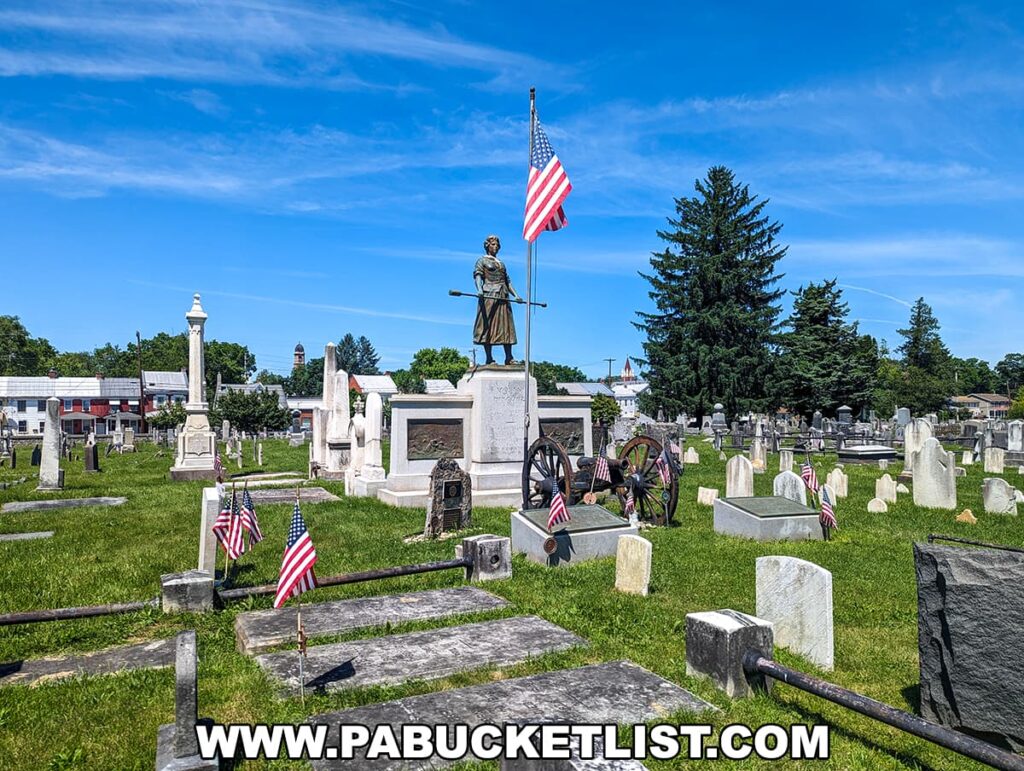
Her story is a powerful reminder of the vital roles women played in the fight for American independence.
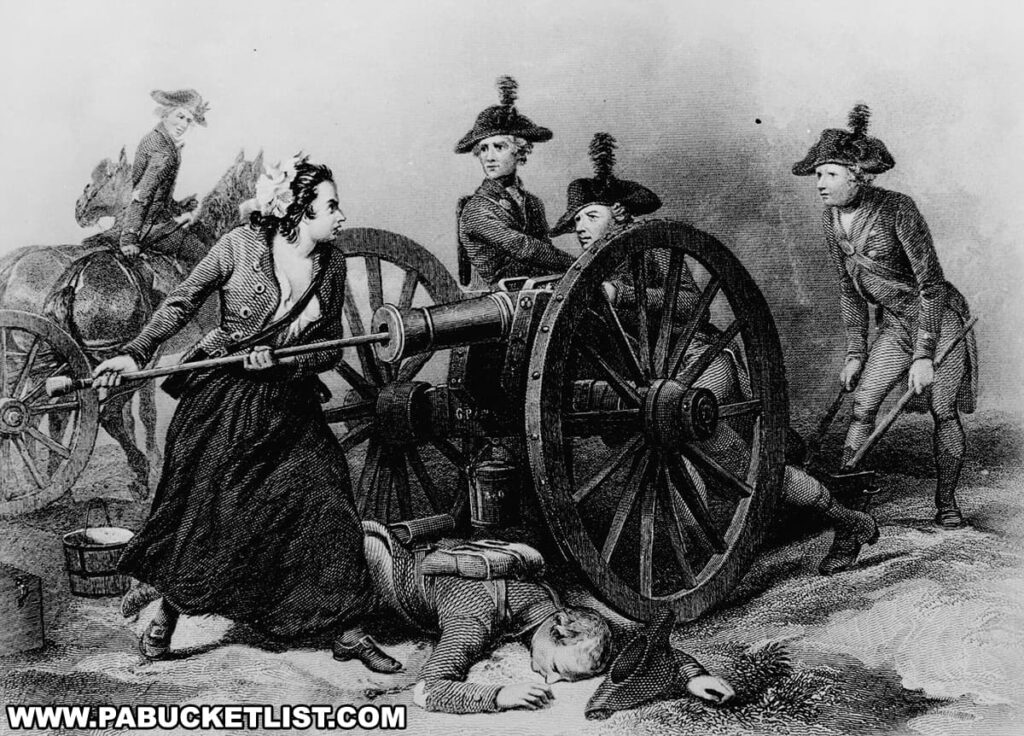
The monument and the serene surrounding cemetery provides a solemn yet inspiring atmosphere for visitors to contemplate and appreciate the sacrifices made by those who fought for American freedom.
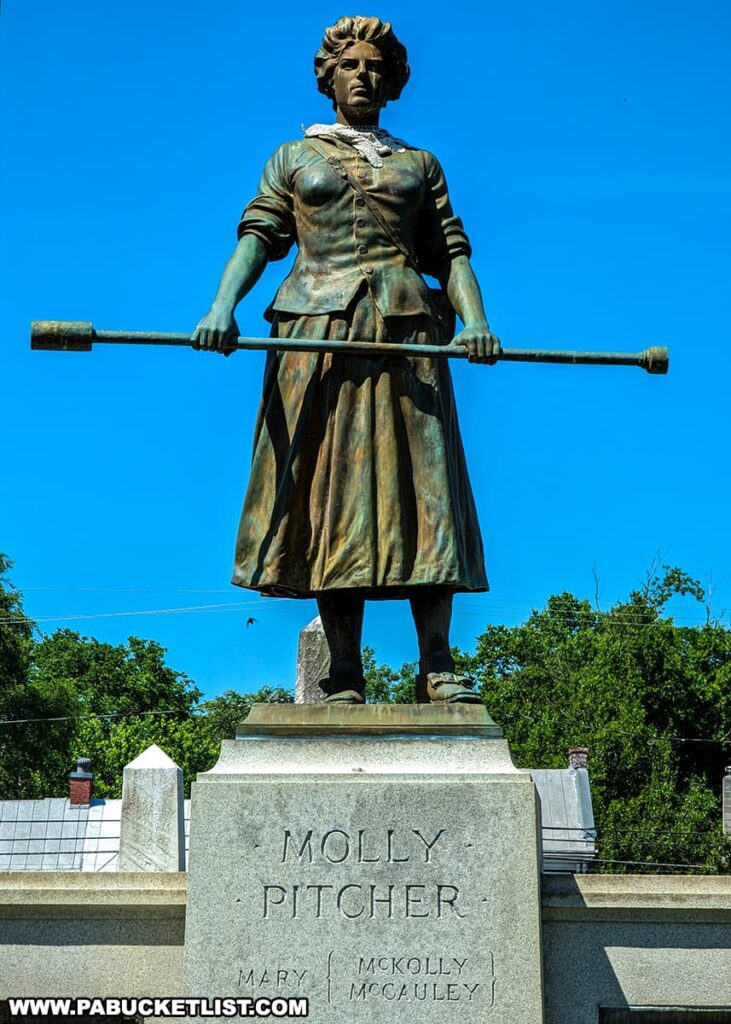
Related Attractions
The Betsy Ross House in Philadelphia honors another heroine of the American Revolution by preserving the site where Betsy Ross is said to have sewn the first American flag in late May, 1776.
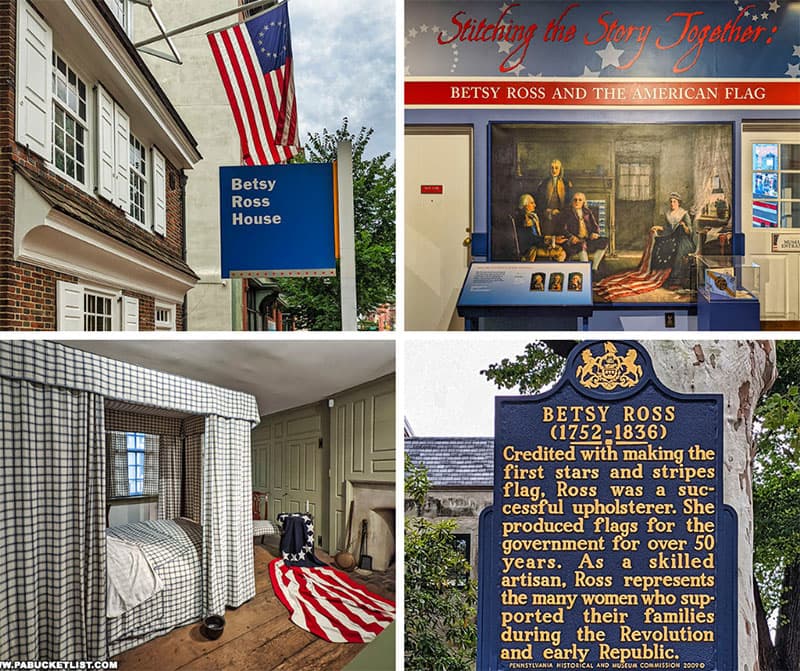
The Museum of the American Revolution in Philadelphia uses historic artifacts, dioramas, short films, paintings, and other exhibits to tell the story of the Revolutionary War in America.
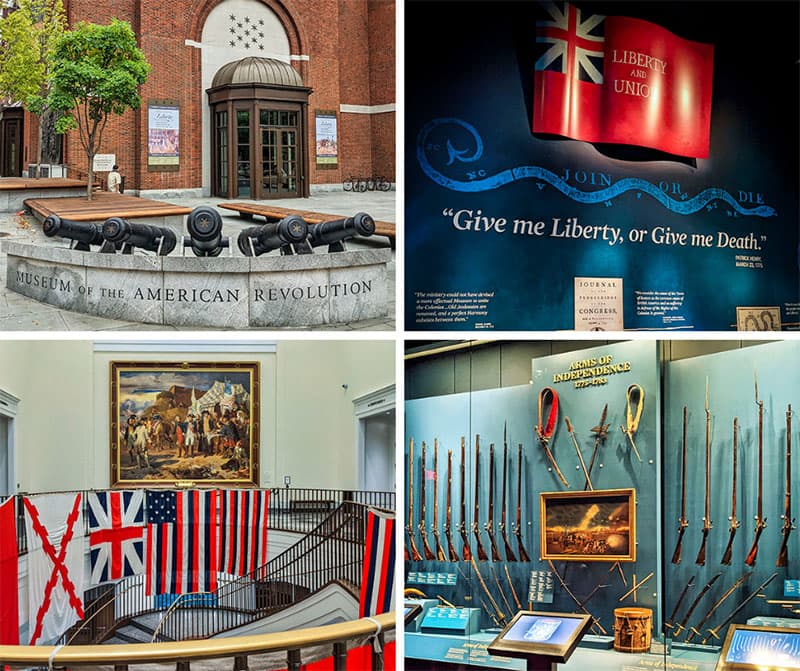
Independence Hall in Philadelphia is the birthplace of the United States; both The Declaration of Independence and U.S. Constitution were signed here.
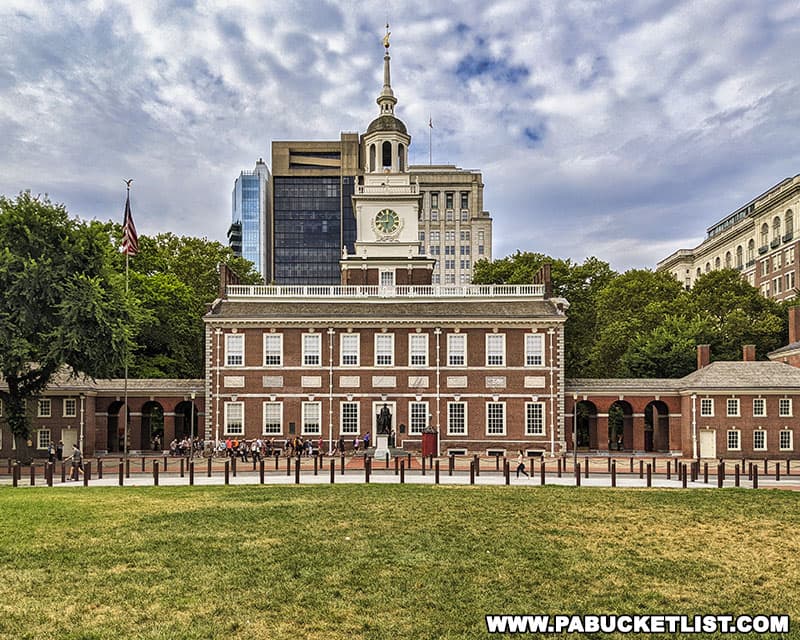
Find even more great spots to explore in Cumberland County and all across Pennsylvania with the interactive PA Bucket List Travel Map!
Did you enjoy this article?
If so, be sure to like and follow PA Bucket List on Facebook, Instagram, and/or Pinterest to learn more about the best things to see and do in Pennsylvania!
Click on any of the icons below to get connected to PA Bucket List on social media.


